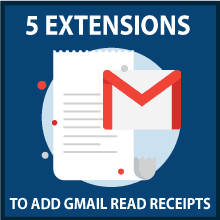 Do prospects you target with a well-written cold email ever see it? Nobody knows. Uncertainty is a constant in sales emails… Except it shouldn’t be this way. Enter Gmail read receipts.
Do prospects you target with a well-written cold email ever see it? Nobody knows. Uncertainty is a constant in sales emails… Except it shouldn’t be this way. Enter Gmail read receipts.
Gmail read receipts are the only way to know whether prospects read your emails. But with a bit of research, it becomes obvious that the default option for Gmail read receipts is quite poor.
So, I looked around. After a bit of research, it became obvious that email tracking extensions are the way to go. I chose five that achieve the perfect implementation of Gmail read receipts — for free.
Without any further adieu, let’s dive in!
In many ways, email feels stuck in the 1990s. Modern messengers (think WhatsApp) offer you a glance-able way to see if your message was seen. Email platforms insist on a dangerous level of ambivalence.

Has a prospect actually seen your message? You never know!
But knowing is what allows you to come up with a better email strategy. Does nobody open your emails? Time to change the subject line? Only a few replies after they do? Maybe you didn’t put enough thought into the opening sentence?
In these terms, a Gmail read receipt is an essential feature. But when I first looked for a way to add Gmail read receipts, I was a bit dumbfounded. The implementation is basically useless.
Gmail’s default option doesn’t cut it
I bet a lot of people don’t even know that Gmail has a native read receipts feature. I didn’t. So this video came as a complete surprise:
It’s actually possible to have read receipts turned on in Gmail without third-party tools? That’s great! Why isn’t everybody using it?
Turns out, there are more than a couple of reasons why. For starters, you probably can’t use them. To get access to native Gmail read receipts, you have to be on a paid G Suite account. Receipts are turned on manually in the Google Admin console (here’s how), and they don’t work with regular @gmail.com accounts.
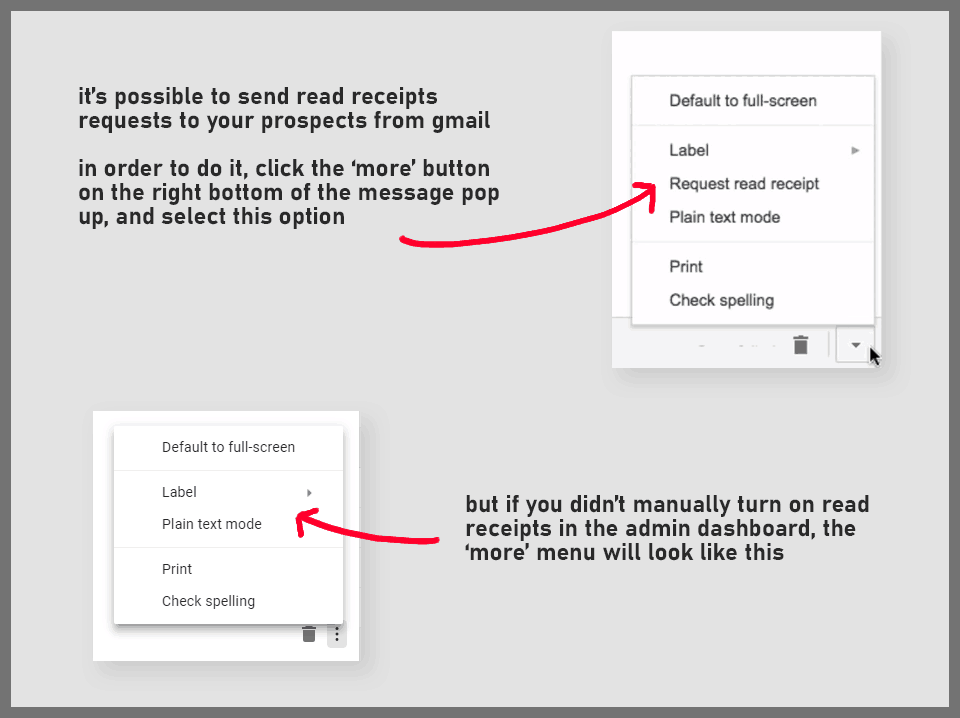
Now, don’t go about this just yet. The implementation of native Gmail read receipts renders them useless. Why?
For a Gmail read receipt to work, your prospect has to manually confirm that they read an email. Via an annoying pop-up message. That… isn’t optimal.
My guess? 99% of prospects would ignore the Gmail read receipt pop-up. Confirming that they read a message feels like promising to send a reply. And why would anyone want to promise you anything before they even read your email?
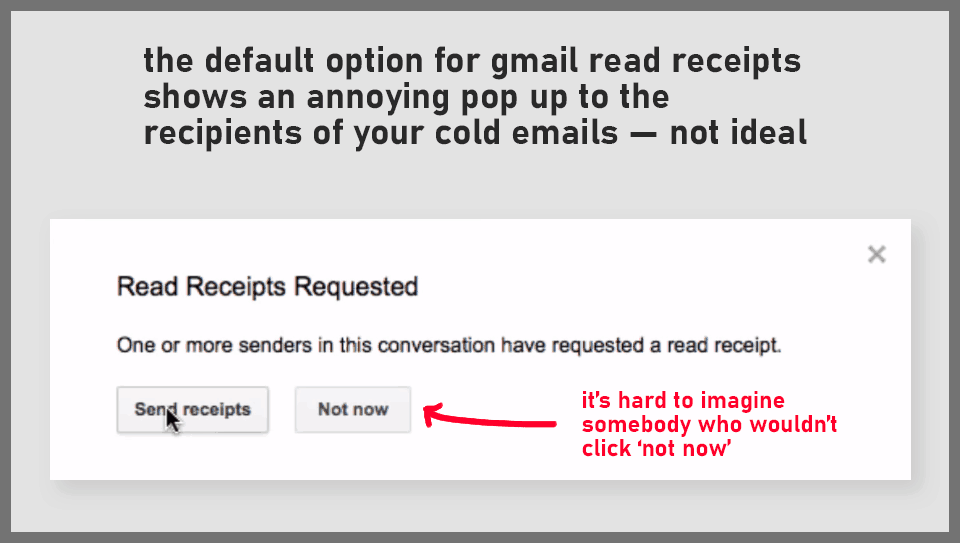
No wonder I have never received an email with Gmail read receipt turned on. And if I did, I’d probably click ‘Not now’.
Thankfully, it’s not the only solution.
Use email tracking extensions for the best Gmail read receipts experience
Email trackers are not some crazy new invention. They’ve been around for years. And they are great!
Read receipts extensions allow me to have a seamless WhatsApp-like experience for Gmail. Having emails augmented with little 
Here are the five best Gmail read receipt extensions and how they work:
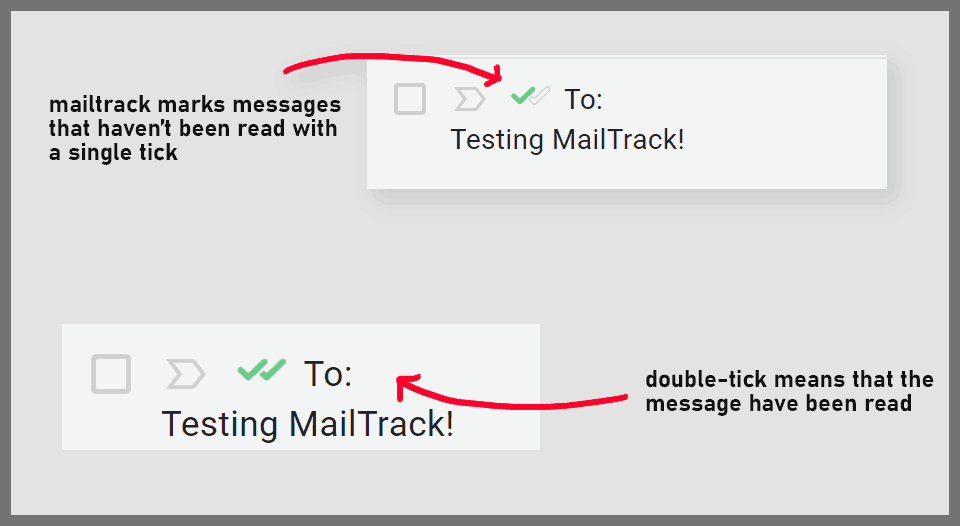
Available for: Google Chrome, Mozilla Firefox, Opera, Microsoft Edge
Only want to add glance-able read receipts to Gmail? MailTrack is a strong contender for being the best on this list.
It’s an extension for Gmail that is fast, lightweight and available for most modern browsers. Often email tracking is one of the features of a big sales solution (think SalesHandy or Yesware). But MailTrack is simple. It does one thing and does it great: shows Gmail read receipts in the ‘Sent’ folder.
Developers promise that the Gmail read receipts feature will stay ‘free, forever’. A claim which helped MailTrack gain a 4.5-star rating on the Chrome Web Store.
The only caveat? MailTrack adds its own signature into your emails (which you can manually remove). As people can judge your cold emails on the email signature, it’s better to buy a Pro subscription ($59 a year). It comes with click tracking, metrics, and allows MailTrack to work on your phone.
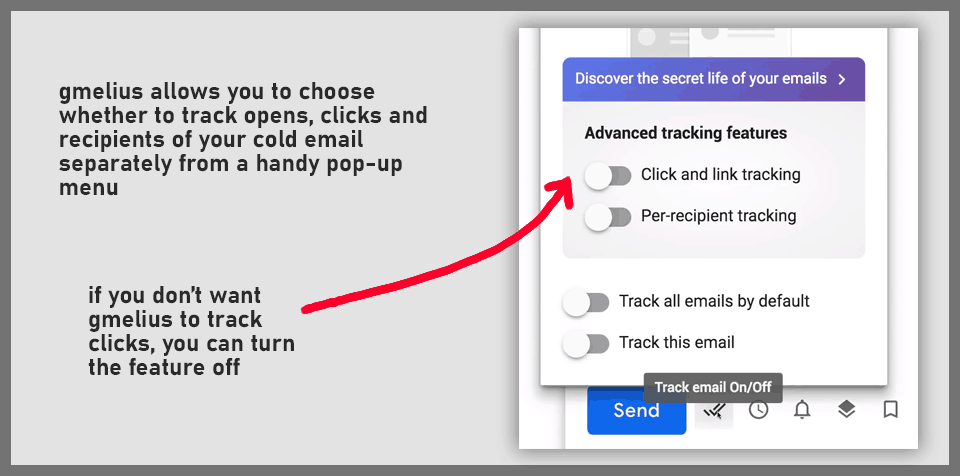
Available for: Google Chrome, Opera, Safari
Gmelius is one of the oldest and most popular extensions of its kind. As opposed to MailTrack, it comes loaded with features and calls itself a ‘lightweight CRM’.
It’s not wrong. Gmelius lets you schedule emails, create email campaigns, delegate messages to members of your team… Even create Kanban boards! And yes, it also tracks your emails for you.
It might be more than you need if you’re working solo (or already have a sales tech stack that includes some of the other features), but for small teams of sales reps, Gmelius is perfect. Its email tracking feature is fast and reliable. You get unlimited Gmail read receipts for free (with a branded signature). Gmelius Premium improves the service with per-recipient tracking, click metrics and more.
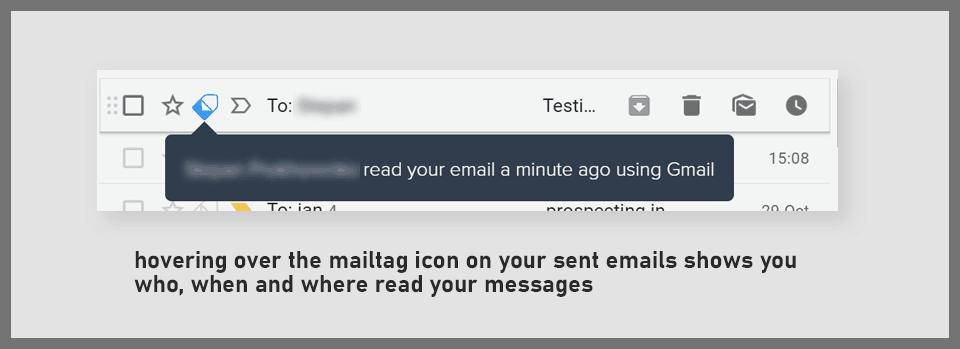
Available for: Google Chrome
I love how sleek MailTag’s implementation of Gmail read receipts is. It integrates well into Gmail’s interface and stays out of sight when you don’t need it.
What’s best? MailTag allows you to track several metrics (like clicks and reopens) right in your inbox. Hover over the read receipt, and it will show all the necessary information in the drop-down. MailTag can even highlight how many times your prospect reopens your message.
The only downside is that MailTag doesn’t have any kind of a free subscription. You can take it for a spin for a 14-day trial, and after that, it’s $9 per month. And the subscription includes other great sales-first features, like scheduling emails.
Available for: Google Chrome
Cloud sync platform CloudHQ hosts more than a dozen productivity-focused Chrome extensions. One of them is an inconspicuously-named Free Email Tracker.
I’m happy to report that the name doesn’t lie. Free Email Tracker does track emails. For free!
It’s simplistic and convenient. But it does pack a few extra features under the hood. For example, Free Email Tracker supports SMS notifications for Gmail read receipts. Turn them on for your most important cold emails — and you won’t miss an opportunity even if you’re not in front of your PC. That’s something I didn’t find in similar extensions for Gmail read receipts.
By default, Free Email Tracker adds a branded signature to your emails. You can manually remove it — or pay a $5 monthly fee to support the developers, and your signature will remain unchanged. I wasn’t able to find any other restrictions for this extension.
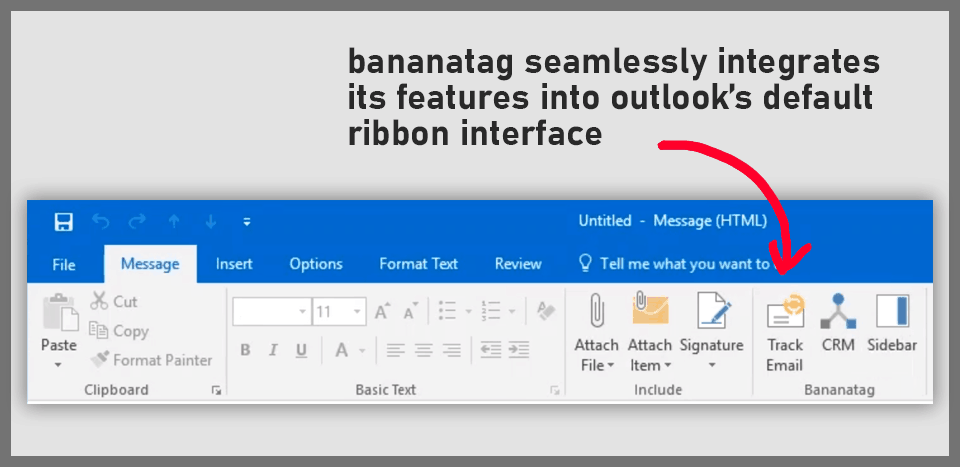
The previous extensions we mentioned in the article are all great at adding read receipts… But only for Gmail. What about Outlook?
I found BananaTag to be a good alternative if you’re working with Microsoft’s email app. Its email tracking feature is as reliable and insightful as any we mentioned above.
The approach to read receipts, however, is less sleek. No more WhatsApp-like ‘ticks’. BananaTag sends you an email each time a prospect reads your message. Informative, but a bit obtrusive.
But if you’re using Outlook, there aren’t many options out there. BananaTag integrates well into the interface. For $10 a month, it lets you track up to 100 emails per day. Additional metrics, attachment tracking, and scheduling are also included.
There is also a free plan, limited to 5 tracked emails per day. It should be just enough to see if BananaTag’s worth it for you.
Don’t want to be tracked?
Gmail read receipts is a great feature and something that I’d love to see implemented by default. But sometimes, you might not want to be tracked yourself.
For example, if you’re out of office and want to read incoming messages, but not reply to them before the leave is over. Why send mixed signals to potential partners?
PixelBlock is an extension for Google Chrome that blocks all email tracking attempts. It also shows you the tracking source. It does what it does, and does it well.
It’s a good moment to remind you that prospects can use extensions like PixelBlock. So while relying on Gmail read receipts is useful, don’t rely on them too much.
Conclusions
Gmail read receipts are a great tool for salespeople. They allow you to get rid of the uncertainty that comes with cold emails. Choose the right extension, and you’re good to go. Just make sure to set your expectations right.
Oh, and if you’re in the mood for even more Google Chrome extensions for salespeople? We have just the article for you, so go give it a read.
Now — do you have a favorite way to get Gmail read receipts? Do you use them at all? Share your thoughts below!

Can anyone let me know if MailTrack is safe to use?
It mentioned that it can read, send and permanently delete all my emails
Please help
I love the application but not sure about safety
Also, this is a brilliant article
All the others are literal shit
This one actually helped me a lot
thanks
Excellent article. Thank you Steven!
Very informative article, Thank You! I’ve just gotten PixelBlock for myself and will see how that works out in the long run.
this is advertising..I just want information about how to turn on the blasted read receipt function in gmail which would be fine. I disagree with your comment that ‘no-one would click on this’..can’t find a way to get it to work. I once tried these add-ons and found them clunky and unworkable
Hey Douglas! This is Steve, the author of the article.
As I’ve mentioned in the post the default Gmail read receipts can be turned on ONLY if you have a paid G Suite subscription. It’s not available if you’re on a regular @gmail address.
You need to have admin access or ask your administrator to do it. If you have G Suite, you can follow the steps below to turn read receipts on:
1. Open Admin Console and go to Apps -> G Suite -> Gmail -> User settings.
2. In the Email read receipts section, choose ‘Allow email read receipts to be sent to any email address’.
You’ll find complete instructions here: https://support.google.com/a/answer/1383374?hl=en
If you want to use read receipts with your regular @gmail address, I fear that your only option is using an extension. I’ve tested all extensions mentioned in this article and they all worked pretty reliably. I’m curious, what exactly did you find clunky with them?